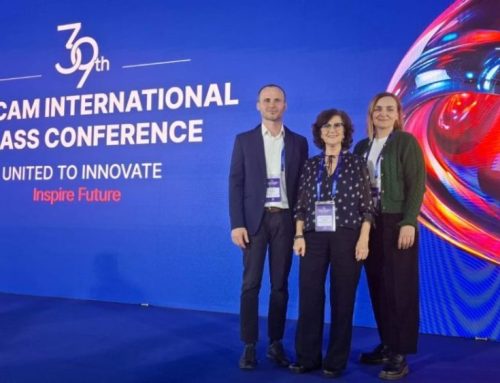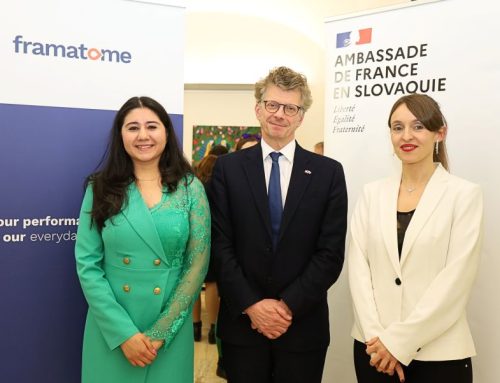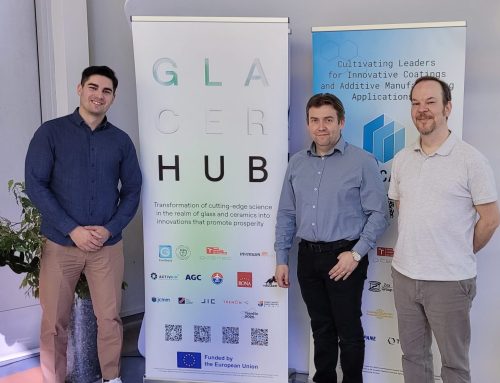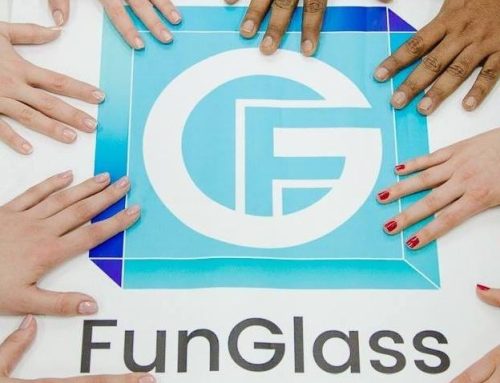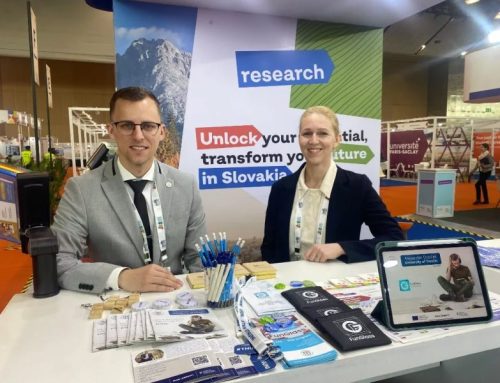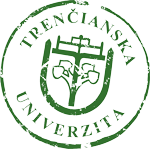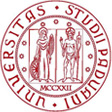We would like to draw your attention to the new papers of our researchers presenting their research results achieved in collaboration with the colleagues from FunGlass partners´ institutions. The papers are published in peer-reviewed and highly cited journals:
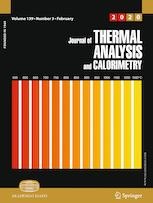
Prnová, A., Plško, A., Valúchová, J., Klement, R., Chromčíková, M., Mutlu, N., Majerová, M., Bruneel, E., Galusek, D.: Crystallization kinetics of binary Yb2O3–Al2O3 glass. In: Journal of Thermal Analysis and Calorimetry (2020).
https://doi.org/10.1007/s10973-020-10049-7
Abstract: The ytterbium aluminum garnet composition YbAG (62.5 mol.% Al2O3, 37.5 mol.% Yb2O3) was prepared in the form of glass microspheres by flame synthesis. Precursor powder for flame synthesis with high homogeneity was prepared by modified sol–gel Pechini method. XRD pattern of prepared glass microspheres indicated predominantly amorphous nature of the sample. Detailed study of morphology of the microspheres by scanning electron microscopy revealed the presence of a small fraction of partially or fully crystallized microspheres. The high-temperature X-ray powder diffraction analysis (HT XRD) was carried out in the temperature interval 750–1450 °C: The temperature dependence of phase composition was determined. Crystallization of Yb3Al5O12—ytterbium aluminum garnet phase—was observed in the temperature range 900–1200 °C. The DSC analysis with heating rates 2, 4, 6, 8, 10 °C min−1 in temperature interval 25–1200 °C was performed in N2 atmosphere to study thermal behavior and crystallization kinetics of prepared glass microspheres. The two exothermic effects at 918 and 939 °C were observed, which were attributed to Yb3Al5O12 crystallization. The crystallization kinetics of prepared sample was examined with the use of JMAK model, and the kinetic triplet—frequency factor A = (1.8 ± 2.2) 10+28 min−1 (for the first peak), A = (1.2 ± 1.6) 10+55 min−1 (for the second peak), apparent activation energy Eapp = (6.4 ± 0.1) 10+02 kJ mol−1 (for the first peak), Eapp = (1.3 ± 0.1) 10+03 kJ mol−1 (for the second peak) and the Avrami coefficient m = 3 (for the first peak) and m = 2 (for the second peak)—was determined using RSS, R 2adj, AIC and WAIC criteria.
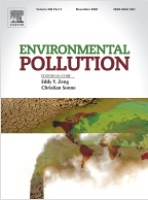 L. Fernández- J. González Rodríguez- M. Gamallo- Z. Vargas-Osorio- C. Vázquez-Vázquez- Y. Piñeiro- J. Rivas- G. Feijoo- M. T. Moreira: Iron oxide-mediated photo-Fenton catalysis in the inactivation of enteric bacteria present in wastewater effluents at neutral pH. In: Environmental Pollution, Volume 266, Part 3, November 2020, 115181
L. Fernández- J. González Rodríguez- M. Gamallo- Z. Vargas-Osorio- C. Vázquez-Vázquez- Y. Piñeiro- J. Rivas- G. Feijoo- M. T. Moreira: Iron oxide-mediated photo-Fenton catalysis in the inactivation of enteric bacteria present in wastewater effluents at neutral pH. In: Environmental Pollution, Volume 266, Part 3, November 2020, 115181
https://doi.org/10.1016/j.envpol.2020.115181
Abstract: The pressure on natural water resources associated with increasing water scarcity highlights the value of using reclaimed water through the development of efficient and environmentally friendly treatment technologies. In this work, the use of magnetic nanoparticles in photo-Fenton catalysis for water disinfection was considered to inactivate natural enteric bacteria present in municipal wastewater effluents under white light and neutral pH. The most recommended ranges were evaluated in key variables such as the loading and composition of nanoparticles (NPs), hydrogen peroxide (H2O2) concentration, the light source (UV and visible) and treatment time were evaluated in wastewater disinfection expressed in terms of total coliforms and Escherichia coli colony forming units (CFU). The magnetic separation of NPs allowed the disinfection process to be carried out in different cycles, facilitating the recovery of the nanocatalyst and avoiding its discharge with the treated effluent.
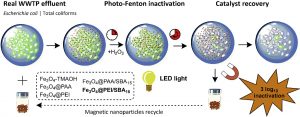
![]() Velázquez, J.J.; Gorni, G.; Balda, R.; Fernández, J.; Pascual, L.; Durán, A.; Pascual, M.J.: Non-Linear Optical Properties of Er3+–Yb3+-Doped NaGdF4 Nanostructured Glass–Ceramics. In: Nanomaterials 2020, 10(7), 1425.
Velázquez, J.J.; Gorni, G.; Balda, R.; Fernández, J.; Pascual, L.; Durán, A.; Pascual, M.J.: Non-Linear Optical Properties of Er3+–Yb3+-Doped NaGdF4 Nanostructured Glass–Ceramics. In: Nanomaterials 2020, 10(7), 1425.
https://doi.org/10.3390/nano10071425
Abstract: Transparent oxyfluoride glass–ceramics containing NaGdF4 nanocrystals were prepared by melt-quenching and doped with Er3+ (0.5 mol%) and different amounts of Yb3+ (0–2 mol%). The selected dopant concentration the crystallization thermal treatments were chosen to obtain the most efficient visible up-conversion emissions, together with near infrared emissions. The crystal size increased with dopant content and treatment time. NaGdF4 NCs with a size ranging 9–30 nm were obtained after heat treatments at Tg + 20–80 °C as confirmed by X-ray diffraction and high-resolution transmission electron microscopy. Energy dispersive X-ray analysis shows the incorporation of rare earth ions into the NaGdF4 nanocrystals. Near-infrared emission spectra, together with the up-conversion emissions were measured. The optical characterization of the glass–ceramics clearly shows that Er3+ and Yb3+ ions are incorporated in the crystalline phase. Moreover, visible up-conversion emissions could be tuned by controlling the nanocrystals size through appropriated heat treatment, making possible a correlation between structural and optical properties.
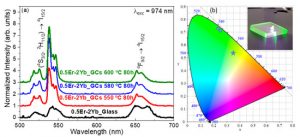
![]() Katharina Schuhladen Swathi N. V. Raghu Liliana Liverani Zuzana Neščáková Aldo R. Boccaccini: Production of a novel poly(ɛ‐caprolactone)‐methylcellulose electrospun wound dressing by incorporating bioactive glass and Manuka honey. In: Journal of Biomedical Materials Research, Part B: Applied Biomaterials, 2020; 1–13.
Katharina Schuhladen Swathi N. V. Raghu Liliana Liverani Zuzana Neščáková Aldo R. Boccaccini: Production of a novel poly(ɛ‐caprolactone)‐methylcellulose electrospun wound dressing by incorporating bioactive glass and Manuka honey. In: Journal of Biomedical Materials Research, Part B: Applied Biomaterials, 2020; 1–13.
https://doi.org/10.1002/jbm.b.34690
Abstract: Wound dressings produced by electrospinning exhibit a fibrous structure close to the one of the extracellular matrix of the skin. In this article, electrospinning was used to fabricate fiber mats based on the well‐known biopolymers poly(ɛ‐caprolactone) (PCL) and methylcellulose (MC) using benign solvents. The blend fiber mats were cross‐linked using Manuka honey and additionally used as a biodegradable platform to deliver bioactive glass particles. It was hypothesized that a dual therapeutic effect can be achieved by combining Manuka honey and bioactive glass. Morphological and chemical examinations confirmed the successful production of submicrometric PCL‐MC fiber mats containing Manuka honey and bioactive glass particles. The multifunctional fiber mats exhibited improved wettability and suitable mechanical properties (ultimate tensile strength of 3–5 MPa). By performing dissolution tests using simulated body fluid, the improved bioactivity of the fiber mats by the addition of bioactive glass was confirmed. Additionally, cell biology tests using human dermal fibroblasts and human keratinocytes‐like HaCaT cells showed the potential of the fabricated composite fiber mats to be used as wound dressing, specially due to the ability to support wound closure influenced by the presence of bioactive glass. Moreover, based on the results of the antibacterial tests, it is apparent that an optimization of the electrospun fiber mats is required to develop suitable wound dressing for the treatment of infected wounds.
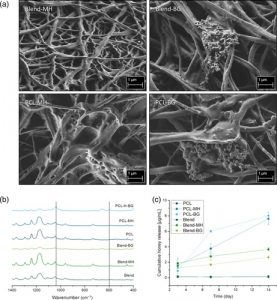
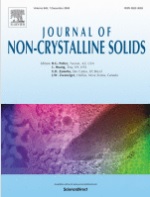 M. Chromčíková, B. Hruška, A. Nowicka, R. Svoboda, M. Liška: Structural relaxation and viscosity of Al2O3 doped magnesium phosphate glasses. In: Journal of Non-Crystalline Solids, Vol. 550, 2020, 120323
M. Chromčíková, B. Hruška, A. Nowicka, R. Svoboda, M. Liška: Structural relaxation and viscosity of Al2O3 doped magnesium phosphate glasses. In: Journal of Non-Crystalline Solids, Vol. 550, 2020, 120323
https://doi.org/10.1016/j.jnoncrysol.2020.120323
Abstract: Thermomechanical analysis and differential scanning calorimetry were used to study the viscosity and relaxation behavior of the Al2O3-doped magnesium phosphate glasses. Viscosity in the range (107 – 1011) Pa•s was described by the nowadays top performing multiparametric models. A fixed extrapolation of high-temperature viscosity according to the Eyring theory was applied with the exception of the Arrhenius equation. The activation energies of viscous flow were very close to the activation energy of enthalpy relaxation determined in terms of the Tool-Narayanaswamy-Moynihan model. On the contrary, the activation energy of volume relaxation was found to be much lower in comparison with the viscous flow activation energy. In general, the increase of the Al2O3 content leads to the increases of the viscosity, of the activation energies of viscous flow and structural relaxation (as well as of the kinetic fragilities calculated from these quantities), and of the temperatures characterizing the glass transition during the viscosity, volume, and enthalpy measurements. The phosphate chains interconnecting effect of the Al3+ ions was found to be much stronger than the influence of the MgO modifying oxide. However, the enthalpy changes during the relaxation processes seem to be primarily influenced by the MgO/P2O5 ratio. Consistence of the compositional interpretation of the obtained results indicates the benefits of the utilization of the correlation coefficients for attributing the structural units responsible for the changes of physico-chemical quantities.
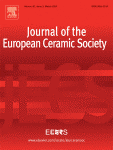
A. Nowicka, H. F. El-Maghraby, A. Švančárková, D. Galusková, H. Reveron, L. Gremillarde, J. Chevalier, D. Galusek: Corrosion and Low Temperature Degradation of 3Y-TZP dental ceramics under acidic conditions. In: Journal of the European Ceramic Society, Volume 40, Issue 15, p. 6114-6122
https://doi.org/10.1016/j.jeurceramsoc.2020.06.019
Abstract: Due to its excellent properties, yttria-stabilized tetragonal zirconia ceramics (Y-TZP) are considered to be an appropriate choice for advanced dental applications. However, the long-term surface stability of these materials in a humid environment is still a matter of discussion. In the present work, two commercial and one in-house prepared 3Y-TZP ceramics were studied. The materials stability and durability were evaluated in the light of their behavior against long-term corrosion under low acidic pH (up to 265 days) and Low Temperature Degradation (LTD). The extent of corrosion and LTD was monitored by determining the content of monoclinic zirconia at the surfaces by X-Ray Diffraction. The obtained results show that leaching of yttrium from the 3Y-TZP tested materials takes place. Nonetheless, there is no significant impact of yttrium loss on the vulnerability to LTD of corroded samples in the conditions of this work.


